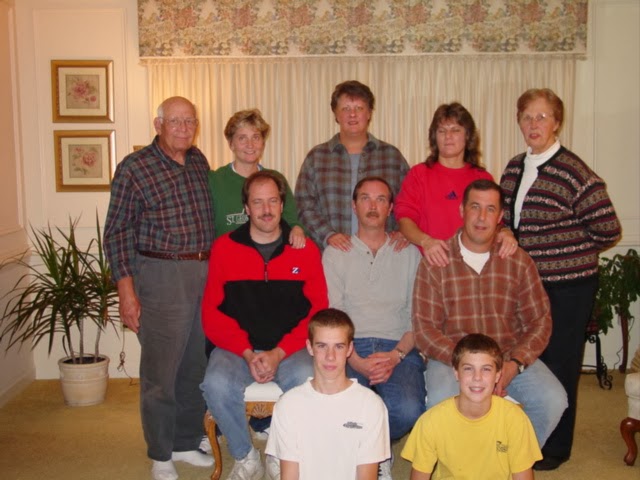Somewhere in Wyoming several train cars derailed and two people were killed. One was the husband of my 4th cousin two times removed. When Charles Henry Munn died, he left a young widow behind with five children, aged 16 to 2 years old. He was killed in 1936 during the Great Depression and in a letter to his family shortly before the accident, he wrote work was slow.
Charles Munn worked for Harbaugh Brothers, Inc., of Kearney, Nebraska. He was a chicken tender, which meant he traveled in the railroad cars when live poultry was being shipped.
Charles Henry Munn, Sr.
The following article was published in the Daily Reminder, the local Rock Springs, Wyoming, newspaper on 25 Jul 1936.
Train Wreck at Baxter Claims Lives of Two; 25 Cars Derailed
A man tentatively identified as C. H. Munn of Central City, Nebraska, was killed outright and Robert Miller, Union Pacific signal supervisor of Rawlins, died at the Wyoming General Hospital Friday evening following one of the worst train wrecks in the recent history of the Union Pacific railroad, which occurred at Baxter Station, seven miles east of Rock Springs, about noon Friday. It was not known yet Friday night whether or not more fatalities might have occurred, as several hoboes were riding on the train when the wreck occurred.
Twenty-five freight and passenger cars on Train 319 were derailed and piled into a twisted mass of wreckage when a center yoke and guide rod of the locomotive worked loose, sliding under the engine and first truck of the baggage car, causing the rear of the baggage car to swing from the track and pile up the cars behind it.
No official statement as to the cause of the wreck was forthcoming until an investigation can be made, but it was learned that the engine was unable to continue to Rock Springs until temporary repairs were made by a repair crew from Rock Springs. It was also learned unofficially that the train was traveling approximately 45 miles an hour when the wreck occurred.
The dead man was tentatively identified from the bills of lading, showing that C. H. Munn was in charge of a car of poultry which was in the middle of the train, he was riding with the poultry. Munn is missing, but no positive identification could be made as the body, caught between the chicken car and a merchandise car, carried no identification. Papers in a suitcase in the chicken car, and a suit of clothes carrying an identification card, carried the name of C. H. Munn. Feed receipts showed that Munn was in charge of the car for the Harbaugh poultry firm of Kearney, Nebraska, and that the car originated at Central City.
It was feared that clearing of the debris might disclose remains of hoboes. However, the right of way was so badly wrecked and the cars so badly piled up that it will be impossible to determine this until cleaning up is completed.
Miller, well known in Rock Springs, was riding in the coach with nine other passengers and Conductor H. H. Owens. Miller's right arm was so badly crushed that it was necessary to amputate it at the shoulder. He died at 9:20 o'clock Friday night.
Conductor Owens, who suffered a wrenched back, stated that he believed the quarter-mile ride after the first jolt came was the longest he ever took in his life. He described it as a horrible sensation. The car gave a sudden lunge and whipped back and forth across the right of way until it sailed into the air and turned a complete somersault to the side, landing upon its side.
Dr. B. V. McDermott of Superior was driving to Rock Springs at the time the accident occurred and saw the wreck. He immediately drove across the flat and rushed to the coach where he assisted in getting the passengers out and loading the badly injured into his car. He brought them to the hospital in Rock Springs.
Train 319 is a mixed train, operating out of Denver to Ogden. Friday's train consisted of 44 cars, of which only 19 were remaining on the track after the wreck, which tied up both east and west bound tracks.
Wandering over the hills near the scene are 60 head of cattle that escaped from the cattle cars, where several head were killed. A carload of hogs and the fatal car of chickens were also on the train. Inquest into the death of Munn will probably be held on Friday, it was said by Coroner J. Warden Opie.
The telegram Charles' sister wrote to Charles' wife, Verna, after learning the news:












































